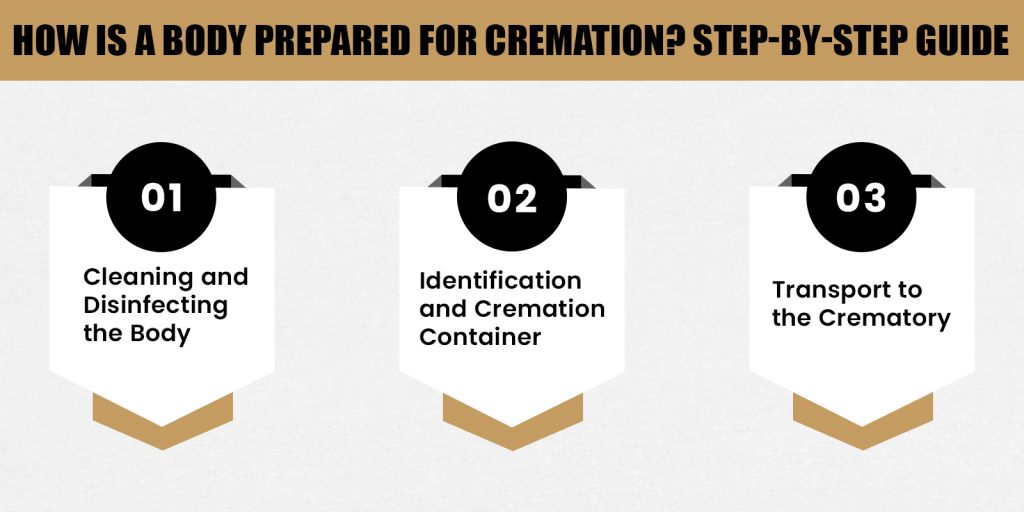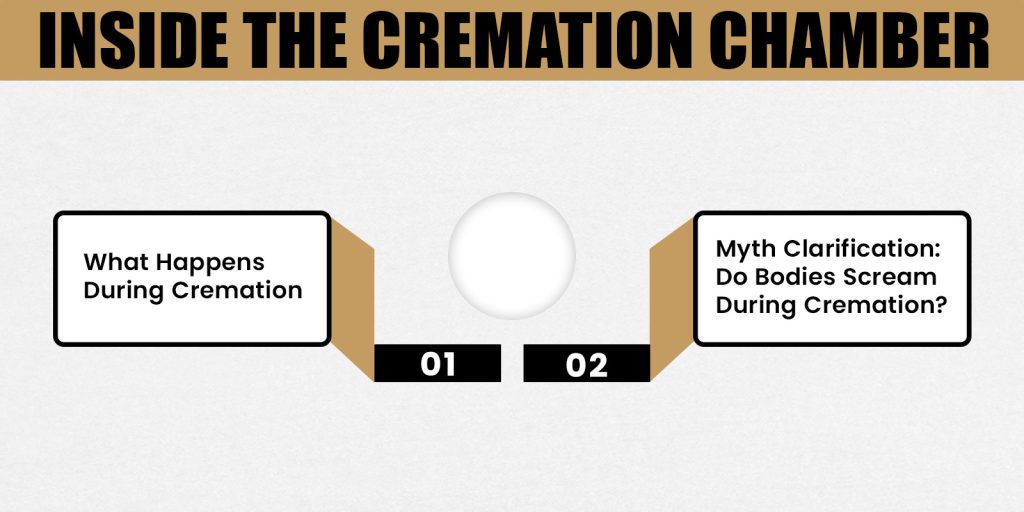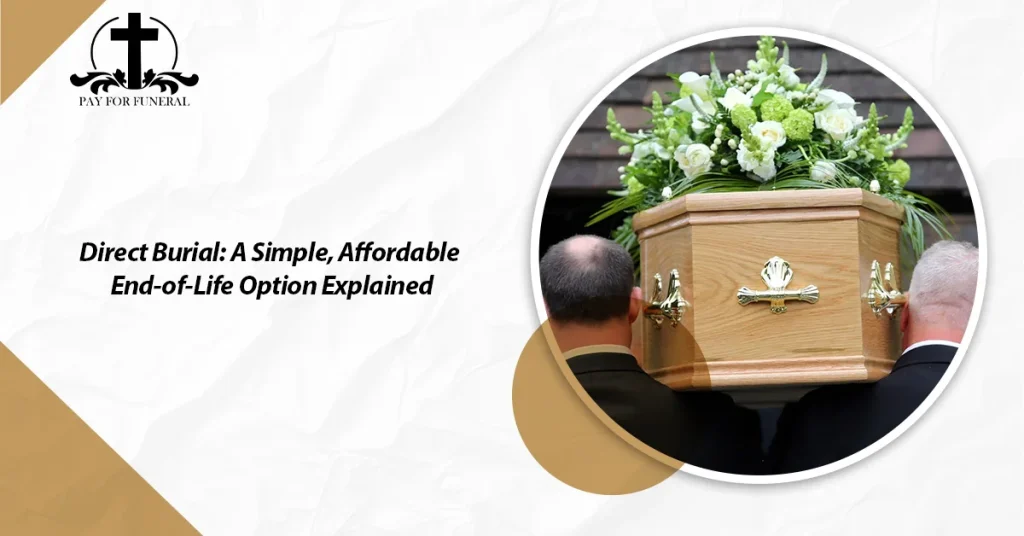Introduction
More and more people today are choosing cremation over traditional burial. This shift has led to a growing curiosity about what really happens during the cremation process. Many families want to know what happens to the body not just out of interest, but to find comfort and make informed decisions.
Understanding how a body is prepared for cremation can provide peace of mind to families and clarity for those planning ahead. This article will walk you through each step of the preparation process, clear up common myths (like whether a body can move or scream), and explain how cremation differs from burial. We’ll also answer some of the most frequently asked questions to help you feel more informed and at ease.
How Is a Body Prepared for Cremation? Step-by-Step Guide
Families often ask, “How is a body prepared for cremation?” Understanding the process can ease concerns and help people make thoughtful end-of-life choices. Below is a clear, step-by-step guide that explains how funeral homes and crematories handle preparing the body for disposal with care and dignity.
1. Cleaning and Disinfecting the Body
The first step in body cremation is gently washing and disinfecting the body. This process is respectful and thorough, ensuring the body is clean before the next steps.
Get Free Quotes
Customized Options Await
Next, any medical devices or prosthetics are removed. For example, pacemakers must be taken out because they can explode under the intense heat of the cremation chamber.
Based on the family’s preferences, the body may be dressed in clothes or wrapped in a simple shroud. Some families provide special garments or keep it simple both options are acceptable and respectful.
2. Identification and Cremation Container
Before cremation, the body is carefully tagged for identity confirmation. This tag stays with the body the entire time to ensure there is no mix-up, even after the process is complete.
The body is then placed in a cremation container, which is typically made of cardboard or soft wood. These materials burn easily and meet crematory requirements for preparing the body for disposal.
3. Transport to the Crematory
Once ready, the body is transported to the crematory. Facilities like Midstate Cremation, Blessing Cremation Center, or Simplicity Cremations are examples of places that carry out this service with professionalism and respect.
At the facility, the cremation container is placed into the cremation chamber, also known as a retort. This is where the actual cremation takes place.
Each step is done with great care to honor the deceased and support grieving families through a difficult time.

What Happens Before Cremation? Initial Steps in the Cremation Process
Before the cremation process can begin, there are several important steps that must take place. These steps ensure everything is done legally, respectfully, and according to the family’s wishes.
Legal documentation is the first requirement. This includes the death certificate, which must be filed with the local authorities, and cremation authorization forms that must be signed by the next of kin. These documents give legal permission for the cremation to take place.
Next, the funeral home takes responsibility for handling the body and preparing it for cremation. Families often ask, “How does the funeral home prepare a body for cremation?” It starts with making sure all the paperwork is complete and the body is properly cared for.
The body is then identified and tagged to prevent any mistakes. A metal ID tag is often placed with the body and stays with it throughout the entire process even during the cremation itself to ensure accurate identification.
Some families choose optional services, such as a viewing or a short ceremony before cremation. If a viewing is requested, embalming may be done, although it’s not required for direct cremation.
These initial steps are designed to bring order, respect, and peace of mind before the actual cremation begins.
Inside the Cremation Chamber: What Happens During Cremation
Once the body enters the cremation chamber, the actual cremation process begins. This part of the process is both highly controlled and respectful.
The chamber, or retort, is heated to extremely high temperatures typically between 1400 and 1800 degrees Fahrenheit. How long does cremation take? On average, it takes 1.5 to 3 hours, depending on the person’s size, weight, and the type of cremation container used.
The body is positioned carefully in the chamber to ensure even exposure to heat. As the temperature rises, soft tissues (like skin and organs) break down quickly and are vaporized. What remains are the bones, which become very brittle from the heat.
Before cremation, certain items must be removed from the body. Many people ask, “What is removed from a body before cremation?” This includes medical implants like pacemakers, which can explode in the heat, and sometimes jewelry, which families may choose to keep.
Myth Clarification: Do Bodies Scream During Cremation?
A common fear is, “Do bodies scream during cremation?” The answer is no. There is no air in the lungs and no functioning vocal cords at the time of cremation, so screaming is scientifically impossible.
However, it’s not unusual for staff to hear popping or cracking sounds during cremation. These are caused by bones drying and breaking due to the extreme heat not by any action of the body itself. While it can sound unsettling, it’s a completely natural part of the process.
Every stage is managed with care and dignity, offering families reassurance that their loved one is being treated with respect.

After Cremation: Processing the Remains
Once the cremation is complete, the remains are allowed to cool inside the chamber. This usually takes about 30 minutes to an hour to ensure safe handling.
After cooling, the cremated remains (mostly bone fragments) are carefully collected from the chamber. These fragments are then placed in a special machine that crushes them into a fine, sand-like ash. This is what most people recognize as “ashes.”
Next, the ashes are placed into an urn or another chosen container. Families may provide their own urn, or the crematory can supply a basic one.
Finally, the ashes are returned to the family, usually with an identification tag and a certificate of cremation. Some choose to keep the urn, while others scatter the ashes in a meaningful location or place them in a columbarium or memorial site.
Comparing Burial vs Cremation Preparation
When deciding between a funeral vs cremation, understanding the differences in how the body is prepared can help families make the right choice.
With traditional burial, the embalming process is often required, especially if there will be a public viewing. How is a body prepared for burial? It typically includes washing, disinfecting, embalming, dressing the body, and placing it in a casket.
In contrast, cremation usually does not require embalming unless there is a viewing beforehand. Instead of a casket, the body is placed in a simple cremation container made of wood or cardboard.
Religious and cultural beliefs also play a big role. Some faiths prefer burial for spiritual reasons, while others fully accept or even favor cremation.
Cost and environmental impact are two other important considerations. Cremation is often less expensive than burial and may be seen as a more eco-friendly option since it avoids land use and embalming chemicals.
In the end, the choice between funeral vs cremation is personal and often influenced by beliefs, budget, and family traditions.
Additional Considerations Before Cremation
Before a body is cremated, there are a few extra steps and options that families may want to understand.
One common question is how long a body can be refrigerated before cremation. Most funeral homes will refrigerate the body immediately if cremation isn’t done right away. A body can typically be kept in refrigeration for several days to a few weeks, depending on state laws and family needs. This helps preserve the body without the need for embalming.
If there are delays such as waiting for out-of-town family members or final paperwork, funeral homes handle this by maintaining proper care and documentation. They ensure the body is stored respectfully and that all legal steps are followed during the wait.
Families may also choose to add optional services before cremation. These include a private goodbye, where close relatives can spend a few final moments with their loved one, or religious blessings or rituals, often performed by clergy according to the family’s faith.
These extra touches can provide comfort, closure, and a personal way to honor the deceased especially when cremation feels less traditional than burial.
Conclusion
Understanding the cremation process can bring peace of mind during a difficult time. When you know what happens from the moment a loved one passes to the return of their ashes, it helps remove fear and confusion. It also allows families to make thoughtful, informed decisions based on their values, beliefs, and needs.
If you’re unsure about any part of the process, it’s always a good idea to speak with professionals at a local cremation center. They can walk you through your options, answer specific questions, and provide support every step of the way.
If you’re considering cremation, now you have a clear idea of how a body is prepared for cremation from start to finish. With this knowledge, you can approach the decision with confidence and care.
Frequently Asked Questions (FAQs)
What is removed from a body before cremation?
Medical devices like pacemakers, jewelry, and prosthetics are removed to ensure safety and respect.
Which part of the body does not burn during cremation?
Dense bones do not completely burn and are later processed into a fine ash.
How long can a body be refrigerated before cremation?
Most funeral homes can refrigerate a body for up to 1–2 weeks, depending on local regulations.
How long does it take to cremate a body?
The cremation process usually takes between 1.5 to 3 hours.
How many bodies are cremated at once?
By law, only one body is cremated at a time in each chamber to ensure proper identification and respect.








